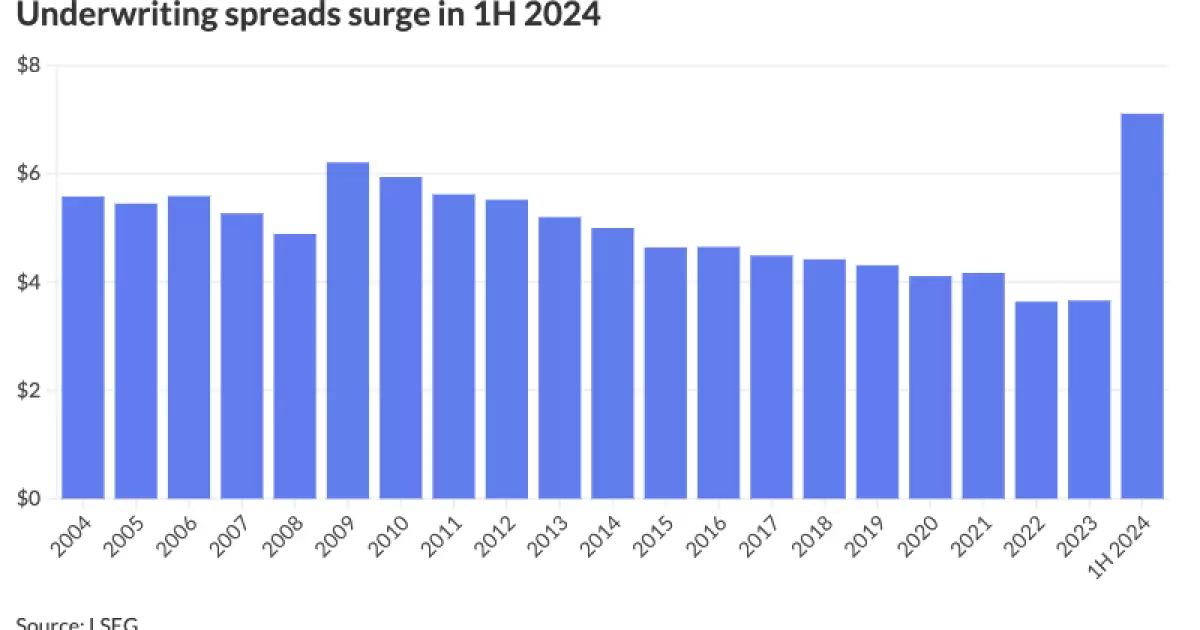The underwriting spreads for all bonds have skyrocketed in the first half of 2024, exceeding $7 for the first time in 25 years. The data provided by LSEG indicates a significant increase in underwriting spreads from $3.70 in the first half of 2023 to $7.11 in the first half of 2024. This surge has been observed in both negotiated and competitive deals, with negotiated bonds experiencing an increase from $3.78 to $6.55, and competitive deals rising from $2.61 to $9.08 during the same period.
One of the primary reasons behind the surge in underwriting spreads is the nature of deals coming into the market. Wesly Pate, a senior portfolio manager at Income Research + Management, points out that underwriting costs tend to increase when there is a higher volume of smaller deals being issued. The rise in the number of deals, especially those related to voter referendums, has led to a significant uptick in underwriting costs. As a result, borrowers are required to invest more in “bandwidth” in order to navigate the current market conditions.
The distribution process in the primary market has also been affected by the increase in underwriting spreads. Dealers are facing challenges with the distribution of bonds due to the abundance of bonds in the market, particularly through separately managed accounts (SMAs). Matt Fabian, a partner at Municipal Market Analytics, highlights that dealers are taking on more price risk, which has contributed to the rise in underwriting spreads. Additionally, the recent departures of major players like Citi and UBS from the underwriting business have further reduced competition among underwriters, leading to an increase in spreads.
The uncertainty in the market, coupled with rising interest rates, has added complexity to the underwriting process. Market participants are grappling with the challenge of predicting future bond prices, which has led to dealers carrying more risk than before. The looming possibility of changes in tax-exemption laws, especially if Republicans win the presidency and Congress, could further impact issuance volumes and widen underwriting spreads in the future.
While some experts view the current underwriting spread of $7.11 as an outlier, others believe it signifies a new trend of higher underwriting costs. However, there is an expectation of a revision that would bring the spreads back to a long-term average. Anthony Tanner, a research analyst and market strategist, views the rise in underwriting spreads as a necessary adjustment given the economic landscape and interest rate environment. He argues that the increased spreads provide a buffer against potential losses, especially in a market with narrower margins compared to previous years.
The surge in underwriting spreads has significant implications for the bond market, impacting both issuers and investors. The current market dynamics, coupled with regulatory and economic uncertainties, suggest that underwriting spreads are likely to remain elevated in the near future. It is essential for market participants to adapt to these changes and navigate the evolving landscape to mitigate risks and capitalize on emerging opportunities.

